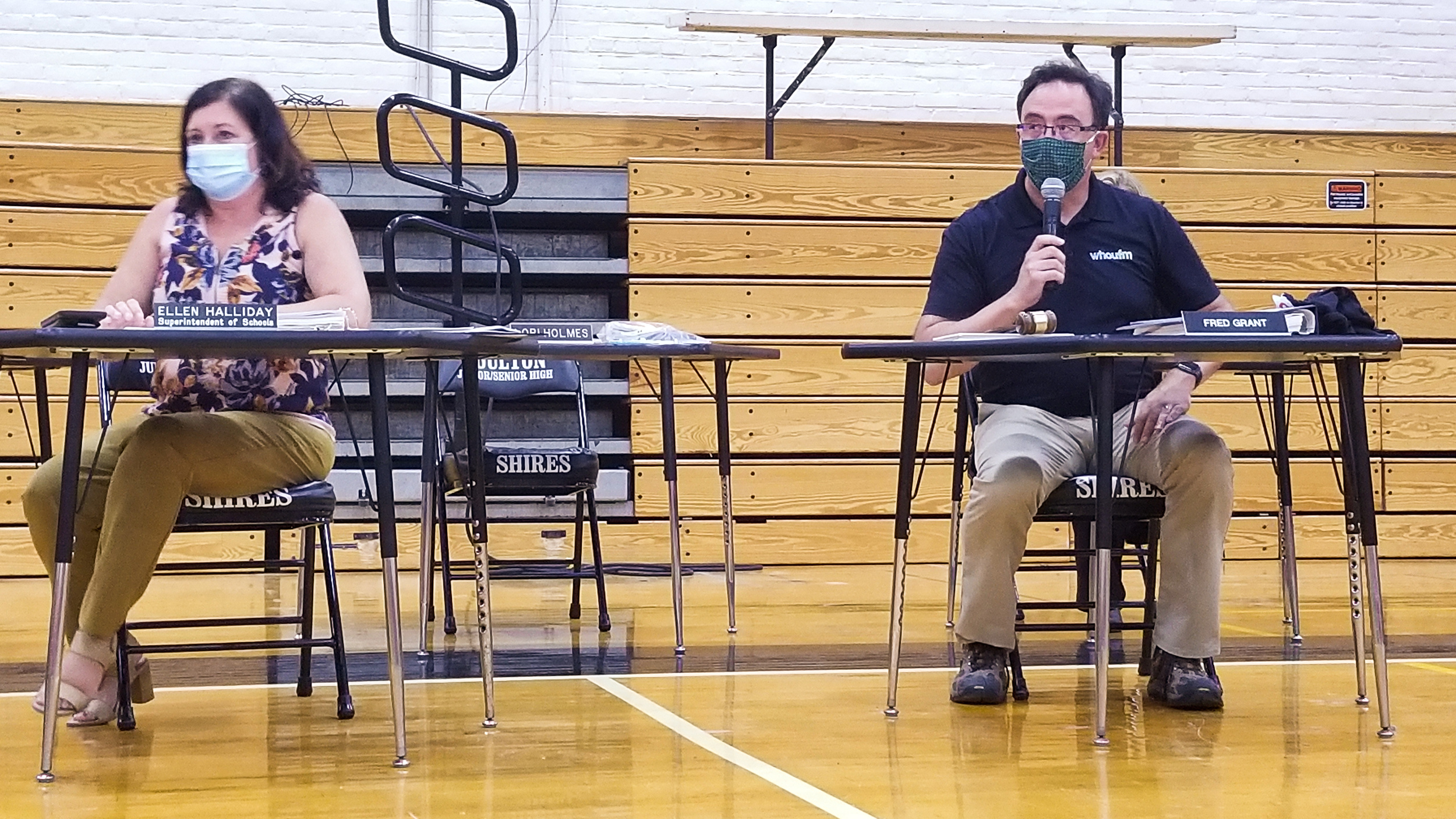
HOULTON, Maine — Students in RSU 29 will get an extra three days of summer vacation to allow teachers a bit more time to prepare for the new school year.
At its meeting Monday, the RSU 29 school board unanimously approved moving the start of school to Thursday, Sept. 3, instead of the original startup date of Monday, Aug. 31, meaning students will have 172 days of education instead of the normal 175.
Monday’s meeting marked the first in-person school board meeting for RSU 29 since the COVID-19 pandemic forced boards to virtual meetings.
The board also agreed to shorten the school day, with students released at 1:30 p.m. instead of the traditional time of 2:20 p.m. to reduce the amount of time that students will be required to wear masks. Teachers will not get out earlier and will use the extra time to prepare for the next day’s work.
By pushing back the start of school three days, it will provide staff with more flexibility in planning for the return of students and greater time to get classrooms ready, Superintendent Ellen Halliday said. There are three teacher in-service days slated for Aug. 25-27 and in addition, Aug. 31-Sept. 2 will be used as in-service days.
Exactly how the start of school will be handled, however, remains a work in progress.
“There is no other way to put it, this has been really hard work,” Halliday said. “We are working on the procedures.”
On Friday, Gov. Janet Mills’ administration released a color-coded system that informed school districts if it was safe to reopen for in-person instruction. A green code meant schools were cleared to open their doors for in-person instruction, while a yellow code meant there was an elevated risk and therefore a hybrid model of instruction needed to be implemented with some in-person and some remote instruction.
A red categorization means there is a high risk of COVID-19 spread and that in-person instruction is not advisable.
All of Maine’s 16 counties were classified as green — meaning the risk of COVID-19 transmission is low enough to make it safe for schools to open their doors. The color codes will be re-evaluated every two weeks, and any county that experiences an uptick in coronavirus cases could see their designation changed.
Halliday said she was surprised the entire state was given a green light, given some areas have seen a greater impact of COVID-19 cases.
“I expected [Aroostook County] would be deemed green, because we have been very fortunate with the number of cases thus far,” she said. “I would have expected to see more yellows and maybe a few reds [around the state.]
While the state is telling school districts that it’s safe to reopen, the decisions around reopening remain with the districts, and Education Commissioner Pender Makin said she expected many districts to reopen under a hybrid model.
Halliday said she expects there will be parents who choose not to send their children to in-person education, and therefore the district must come up with a plan for all three scenarios.
“We know that what we did in the spring was emergency learning,” she said. “It is not what remote learning will look like going forward.”
For students and staff members who are participating in in-person education, they will have to screen themselves for coronavirus-like symptoms before arriving at school and stay home if they have any symptoms. They will also have to report any symptoms to the school.
Students and staff must also wear face coverings while at school, and students’ desks will have to be placed at least 3 feet apart from others as long as they wear face coverings. During meal times, when students can’t wear masks, they’ll have to stay 6 feet from others. Students and staff are also required to receive training in proper hand hygiene to reduce the risk of infection.
Halliday noted that any parent or student who objected to wearing a mask will be required to do the remote learning option as there will be no exceptions to the mask rule. Regular mask breaks will be factored into the school day.
Students who are without internet access in their homes may receive a remote “hotspot” device to work on their assignments if they are learning remotely. She also said the district needs to acquire additional desks because some teachers had shifted to larger tables with multiple students seated together before the pandemic.
Another area the district is working diligently on is busing since the number of students allowed on a bus will be significantly lower than usual. Parents have been sent a survey asking if they need transportation for their student. Data from that survey is still being collected.
“We have teams that are working on all the details on how we will make this work,” Halliday explained.
Bangor Daily News reporter Eesha Pendharkar contributed to this story.




